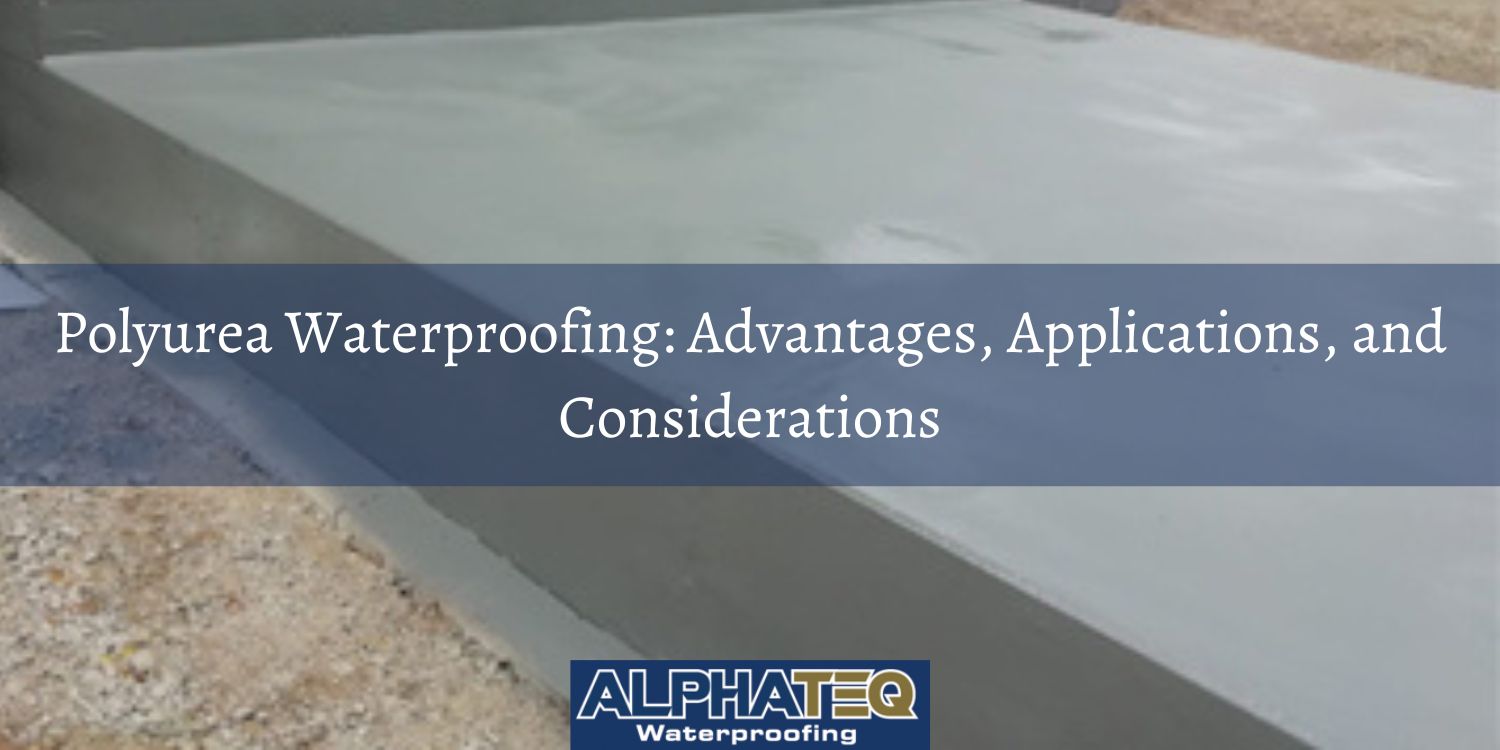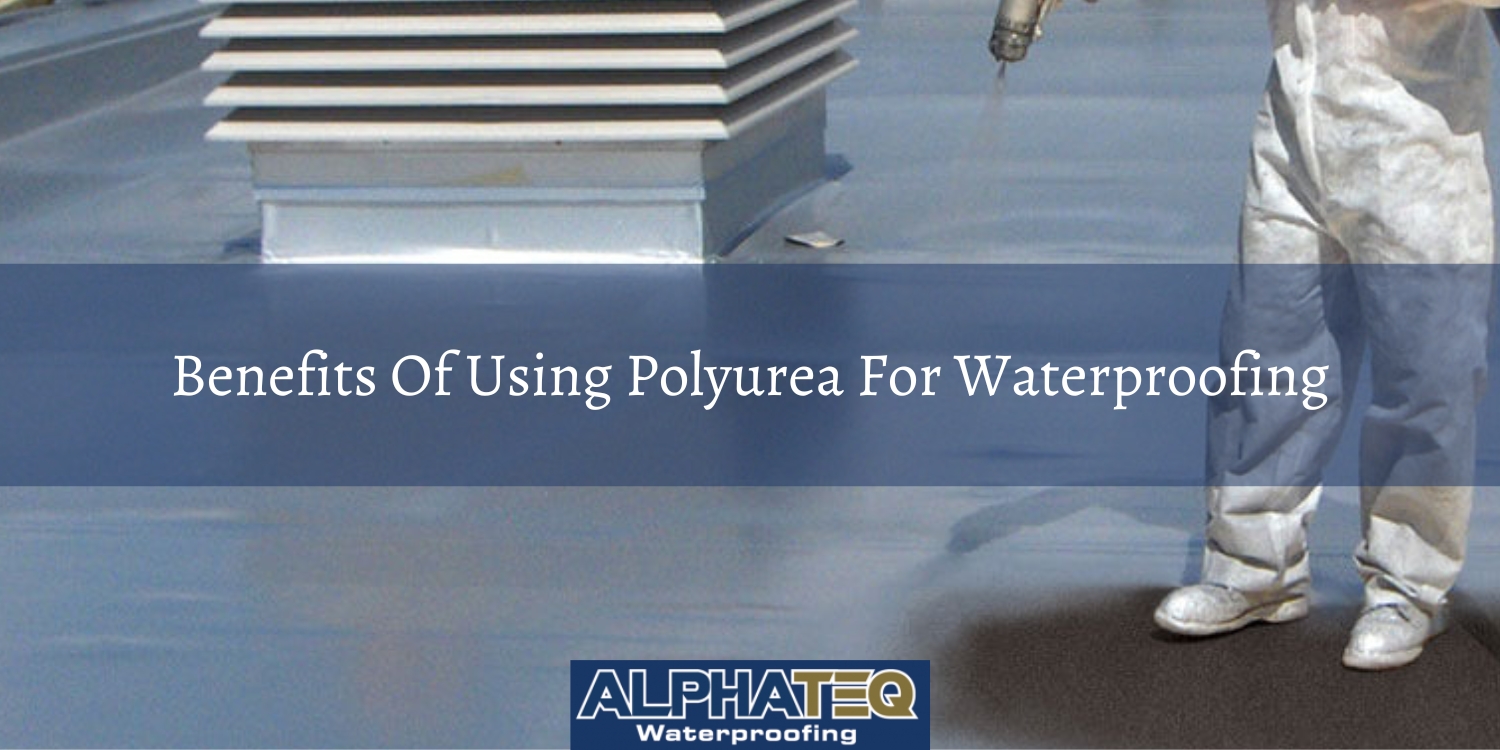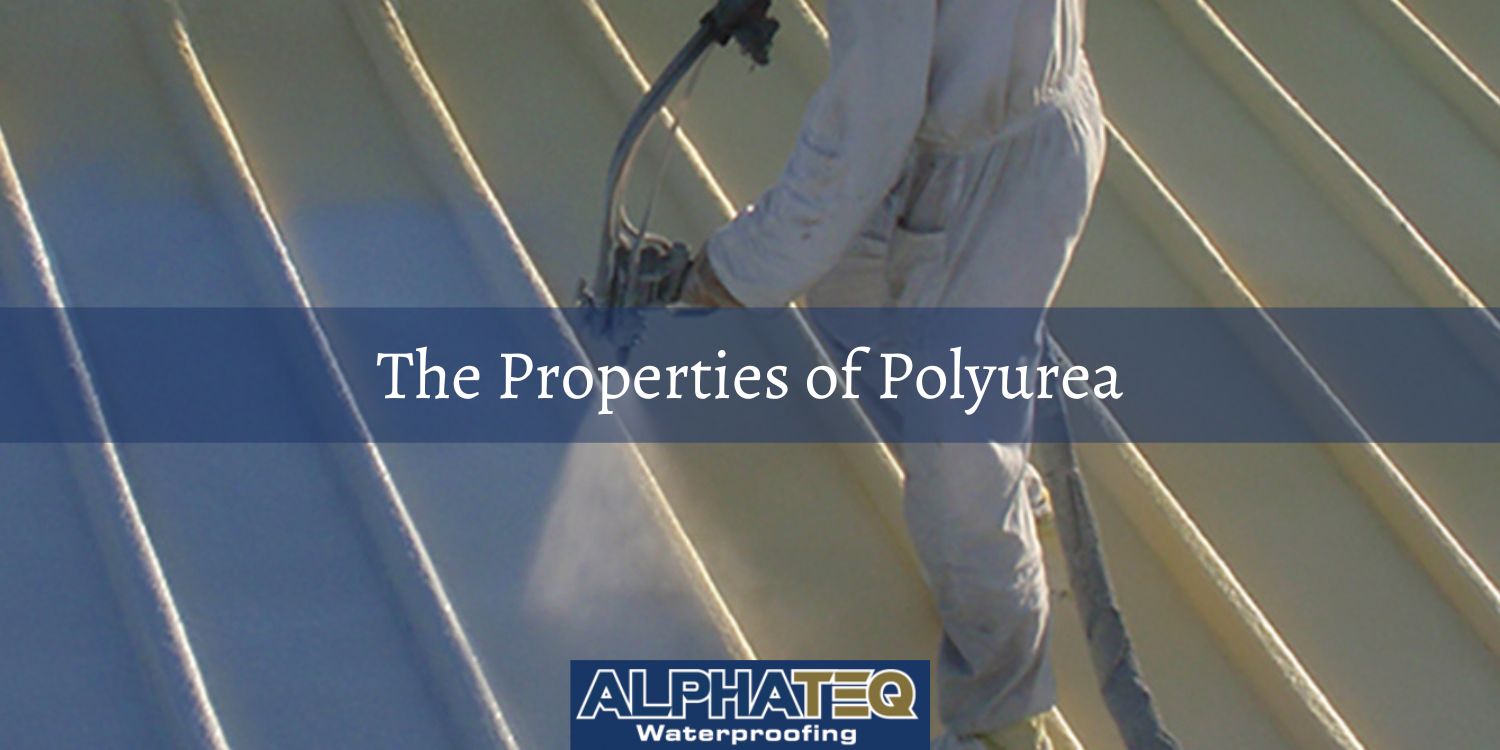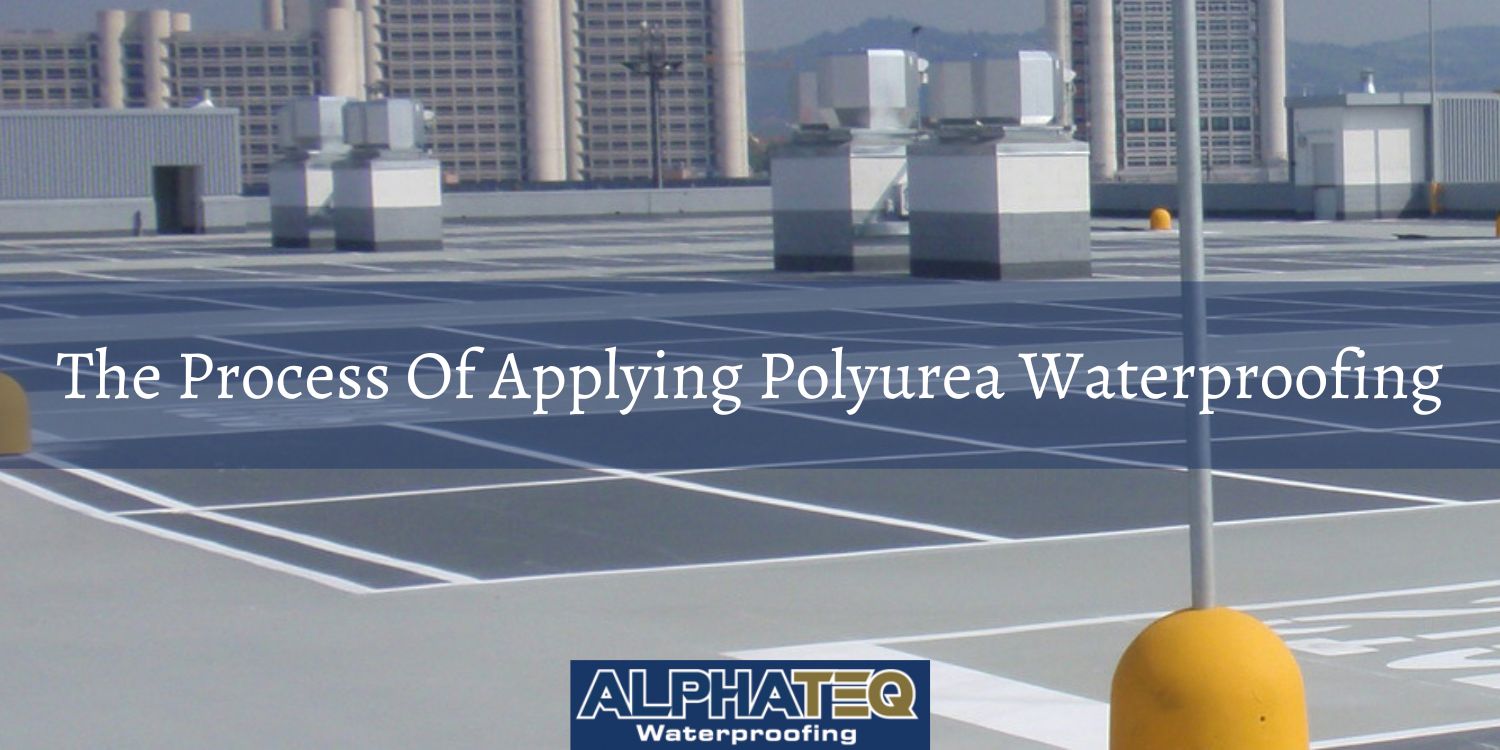I agree Our site saves small pieces of text information (cookies) on your device in order to deliver better content and for statistical purposes. You can disable the usage of cookies by changing the settings of your browser. By browsing our website without changing the browser settings you grant us permission to store that information on your device.

Polyurea waterproofing is a protective coating technology. It utilizes a type of elastomer, known as polyurea. This elastomer creates a durable, flexible, seamless barrier against water and other corrosive substances. Its fast-curing nature and high resistance to extreme conditions make it an effective solution for various waterproofing applications. Waterproofing is an essential component of any construction project, serving as a defensive barrier against the forces of nature. Without it, structures can quickly degrade, leading to costly repairs and safety hazards.
Among the various waterproofing technologies which have emerged over the years, polyurea waterproofing stands out due to its numerous advantages. This comprehensive article delves into the world of polyurea waterproofing. We will explore its chemistry, benefits, applications, and recent advancements. As we dissect the intricacies of this waterproofing material, you'll gain insights into how it compares with other methods, its potential limitations, and best practices for application. After reading this article, you'll have a thorough understanding of why polyurea has become a preferred choice for waterproofing in many industries.
Polyurea waterproofing is an innovative coating technology which uses a synthetic elastomer; polyurea. Developed from the reaction between an isocyanate compound and a synthetic resin blend component. The resulting elastomer forms a dense, flexible, and durable membrane which creates a waterproof barrier upon application.
Understanding what polyurea waterproofing entails requires a delve into its fundamental chemistry. Polyurea is derived from a step-growth polymerisation reaction, which combines an isocyanate component with a synthetic resin blend. These reactants are mixed under precise conditions to produce a durable and flexible elastomer. This elastomer possesses an impressive resilience and longevity. The uniqueness of polyurea lies in its fast-curing nature, often setting within seconds to minutes of application. This rapid cure time, coupled with its high elasticity of up to 600% elongation makes polyurea coatings a versatile solution, suitable for a myriad of applications.
In terms of benefits, a polyurea coating offers an unmatched combination of strength, speed, and flexibility. Its robust physical properties, including high tensile strength, outstanding elongation capabilities, and superior durability, contribute to a long-lasting waterproofing solution. The fast-curing time of polyurea facilitates swift project turnovers, minimising downtime and enhancing productivity. Furthermore, its resilience to a plethora of harsh environmental conditions. This includes exposure to UV radiation through to extreme temperatures and abrasive chemicals. This resilience renders it a highly dependable waterproofing method.
In essence, polyurea coatings provide excellent defence against water infiltration and the resulting damages. This makes such coatings ideal to guard the integrity of structures and extending their lifespan.
Polyurea waterproofing is a sophisticated protective treatment which uses an elastomer called polyurea. This substance, once applied, forms a seamless, dense membrane on surfaces to prevent water infiltration. Polyurea waterproofing significantly enhances the longevity and stability of structures. This is achieved by effectively barring corrosive elements such as water and salt.
The backbone of polyurea waterproofing lies in chemistry. Polyurea is a product of step-growth polymerisation, a reaction between an isocyanate component (aromatic polyurea or aliphatic polyurea) and a synthetic resin blend component through an amine-terminated polymer or an amine-terminated chain extender. This reaction generates an elastomer with remarkable elasticity and durability. Furthermore, polyurea features fast reactivity and curing times, often setting within seconds to minutes of application, which makes it highly favourable in rapid project turnovers.

The effectiveness of polyurea as a waterproofing solution is highlighted by the multitude of benefits it offers. This includes rapid cure time, exceptional durability and adaptability. The attributes of polyurea mean it can be used for different types of waterproof systems. Below, we will delve into each of these benefits in greater detail, highlighting the distinctive features which set polyurea apart in the realm of waterproofing.
Polyurea waterproofing sets itself apart with its extraordinary curing speed. Unlike traditional waterproofing systems which might take hours or even days to cure. Polyurea coatings harden within seconds to minutes of application. This swift reaction time is due to the rapid polymerisation process between the isocyanate and the resin. The advantage of this rapid cure time is twofold. First, it significantly reduces the downtime during the application process, enabling faster project completions. Second, it allows the waterproofed area to be back in service quickly, minimising disruption, which is particularly beneficial in industrial and commercial settings where downtime can be costly. This has made polyurea very popular in both commercial and residential applications. Applications where polyurea is used include; for commercial roofing and as a garage floor coating.
The durability of polyurea coatings is one of their standout features. These coatings create a dense, seamless membrane which demonstrates high tensile strength and tear resistance. This enables it to withstand significant wear and tear. This durability is further enhanced by the coating's excellent abrasion and impact resistance. The result is a waterproofing solution which effectively guards against the ingress of water. This protects the substrate from potential water damage, corrosion, and the destructive forces of freeze-thaw cycles. This robustness extends the service life of the structures it protects, offering a long-term waterproofing solution.
Polyurea displays exceptional resistance to a wide range of harsh conditions. This makes it an excellent choice for demanding applications. Its superior temperature resistance allows it to function effectively in both extreme heat and cold, maintaining its integrity from -40°F to over 350°F. Moreover, polyurea exhibits remarkable resistance to ultraviolet radiation, helping to prevent the degradation often associated with prolonged UV exposure. Additionally, it has excellent resistance to a variety of chemicals, including solvents, oils, and salts. This makes it particularly suitable for use in industrial environments where such exposure may be inevitable.
Polyurea's high elongation capacity is a testament to its flexibility. It can stretch and contract with the substrate, accommodating movements due to temperature changes or other dynamic forces. This elasticity can reach up to 600% elongation. This enables polyurea to maintain its waterproofing capabilities even when applied to surfaces with frequent movement or vibration. This includes surfaces such as bridges, vehicles, and machinery. This flexibility combined with a seamless finish makes polyurea an excellent choice for waterproofing irregular shapes and complex geometries.
Polyurea demonstrates excellent adhesion properties, forming a strong bond with a variety of substrates.This includes metal, wood and concrete coating. The excellent adhesion of polyurea coatings ensures a seamless and continuous waterproof barrier. This eliminates the possibility of leaks at the joints or seams, a common issue with traditional waterproofing systems. Moreover, this superior adhesion contributes to the overall durability and longevity of surfaces which are waterproofed with polyurea coatings.
Despite its superior performance, polyurea coatings requires minimal maintenance. Its robust physical properties and resistance to environmental factors minimize the need for repairs or replacements. Regular inspections and routine cleaning are normally sufficient to maintain the performance of the polyurea coating. The low-maintenance requirements reduces long-term costs, further enhancing the cost-effectiveness of polyurea coatings.
Each of these benefits enhances the utility and effectiveness of polyurea as a waterproofing solution. This highlights why it is a compelling choice for a wide range of applications.

Below we will dissect the physical and chemical attributes, durability, and resistance factors of polyurea. This will highlight why it's a such a popular choice to waterproofing applications.
Polyurea boasts several desirable physical and chemical properties. Its high tensile strength (typically around 3000 psi) and elongation capabilities (up to 600%) contribute to its superior flexibility. Its density, approximately 1.1 g/cm³, aids in maintaining structural integrity. Chemically, polyurea demonstrates strong resistance to water, UV radiation and various chemicals (including salt solutions, oils, and various solvents). This helps ensure minimal degradation over time.
Polyurea's robust durability contributes to its extended longevity. It can withstand prolonged exposure to tough conditions without sacrificing its protective quality. In fact, when properly applied and maintained, polyurea waterproofing systems have been reported to last upwards of 25 to 30 years.
Polyurea shows unparalleled resistance to a myriad of conditions. It remains stable across a wide range of temperatures. This is from as low -40°F to as high as over 350°F. Pure polyurea coatings also retain elasticity in cold climates. Its excellent UV resistance allows it to maintain its colour and physical properties, even when enduring prolonged exposure to sunlight.
Polyurea is a multifaceted waterproofing solution. Its attributes perform across a broad range of applications. It is the unique combination of properties like high durability, flexibility, and rapid curing which make it so versatile. Below we will look at the versatility of polyurea coatings across a range of different applications.
The dynamic nature of polyurea makes it a leading solution for roof waterproofing. Applied as a liquid, it creates a continuous, seamless membrane. Substrates which can be coated include metal, wood, and concrete. With polyurea concrete coatings being the most common use case. More than just a barrier, polyurea also fills in the cracks and joints on roofs. This provides a complete waterproof layer. Given the exposure of rooftops to weather and UV radiation, polyurea's resilience to these factors amplifies its suitability.
Structural foundations and basements are particularly prone to water infiltration. Polyurea emerges as a highly effective solution for these areas. This is due to its hydrophobic nature and strong adhesion capabilities. It not only stops water seepage but also counters the potential for mould and mildew growth. This improves overall building health.
Industrial floors are subject to heavy traffic, impact, and often chemical exposure. Polyurea's inherent mechanical properties, coupled with its chemical and abrasion resistance, make it a favourable floor coating for industrial and commercial applications. Examples of use cases include using polyurea coatings for car parks and garage floors.
The operational nature of water and wastewater treatment plants entails constant water exposure and frequent encounters with a variety of chemicals. The robust chemical resistance and watertight properties of polyurea render it a suitable lining for tanks, basins, and pipes within these facilities.
Polyurea coatings can be used for applications within the defence and security industry due to their remarkable properties and versatility. A military equipment coating requires excellent reliability. And polyurea coatings fit the bill. They are known for their exceptional durability, rapid curing, and resistance to a wide range of environmental factors. This includes extreme temperatures, chemicals, and abrasion. In the defence sector, polyurea is commonly used to protect military vehicles, equipment, and infrastructure against corrosion, impact, and wear. They serve as effective protective barriers, shielding critical assets from damage and extending their lifespan. Additionally, the rapid curing time of polyurea coatings allows for efficient and quick application. This makes them particularly beneficial for military operations where rapid deployment and readiness are essential. Whether coating military buildings, armoured vehicles or even sensitive electronic equipment, polyurea waterproofing play a vital role. They enhance the resilience and longevity of defence and security assets.

Polyurea waterproofing, recognised for its resilience and swift application, is fast becoming a preferred method in the waterproofing industry. However, for this technology to function at its optimal level, one must follow a stringent set of steps.
A project's success pivots on the foundation; surface preparation. Correctly prepared surfaces promote superior adhesion, ensuring long-lasting results.
Polyurea's distinguishing feature is its two-component system consisting of a isocyanate and resin blend. When these components are mixed, a rapid chemical reaction ensues, resulting in an extremely fast cure rate. Let's break down the procedure:
1. Equipment Maintenance and Calibration
2. Ambient Conditions:
In essence, while the application of polyurea waterproofing has its intricacies, understanding and controlling these factors can lead to a flawless and long-lasting result.
The curing process of polyurea is an intricate dance of chemistry that's both swift and efficient. Let’s explore it step-by-step:
The rapid curing of polyurea is not just a testament to its advanced chemistry but also offers tangible advantages to its users:
Reduced Project Costs: Faster cure times can also translate to reduced labor costs. Workers don't need to be on-site for extended periods, waiting for materials to dry or cure. This efficiency can be especially beneficial for larger projects where labor costs can accumulate rapidly.
Overall, the curing properties of polyurea not only attest to its advanced nature but also offer significant real-world advantages, making it an increasingly popular choice in various sectors.
After polyurea has undergone its rapid curing process, it is paramount to ensure the application is up to the expected standards. This entails meticulous observation and the use of specialised tools:
While polyurea boasts rapid application and curing, the post-application phase is critical. A meticulous inspection, followed by appropriate corrective actions, ensures that the waterproofing serves its purpose effectively and endures over time.
Depth of Expertise: The application of polyurea isn't just a procedure. It's requires contractors with the ability to combines knowledge with precision. Given polyurea's rapid curing time and unique properties, any errors in its application can compromise the entirety of a waterproofing project. This makes hiring seasoned professionals non-negotiable.
Equipment Intricacies: Specialised equipment, like the high-pressure, heated spray rigs, are the backbone of the polyurea application process. These rigs are meticulously engineered to manage the two-component system of polyurea, blending them only at the point of application to ensure the perfect mix. Given their complexity, skilled technicians are needed to operate, maintain, and troubleshoot any issues that might arise during application.
Budgetary Implications: The sophisticated nature of this equipment, coupled with their pivotal role in the application process, renders them expensive. Whether a firm opts to purchase, lease, or rent, this equipment will invariably account for a substantial portion of the project's budget.
The Moisture Menace: Polyurea's unique chemical structure, while contributing to its resilience, also leaves it vulnerable to moisture during application. The presence of even minimal moisture can trigger undesirable chemical reactions which undermine the material's integrity. This includes issues such as foaming, which can compromise the evenness of the application, and weakened adhesion, which diminishes the bond between the polyurea and its substrate.
Climate Considerations: In regions prone to high humidity or during rainfall-rich seasons, moisture sensitivity becomes especially pronounced. To combat this, professionals might need to employ supplementary equipment like dehumidifiers to regulate moisture levels or heaters to ensure optimal substrate temperature.
Upfront Expenditure: The initial investment for polyurea application is notably higher than many conventional waterproofing techniques. This isn't just a reflection of the material's cost but also encapsulates professional service fees, specialised equipment usage, and potentially supplementary tools to manage ambient conditions.
Long-Term Value: While the upfront costs might detract building owners from investment, it's important to analyse these against the long-term benefits polyurea offers. Its unparalleled durability means fewer interventions are required in terms of repairs or replacements. This can make the price of polyurea especially attractive when analysed on a cost per year of service life basis.
Ensure Ventilation: Given the chemical nature of polyurea, the spaces where it's being applied need optimal ventilation. This prevents the build-up of potentially hazardous vapours, safeguarding workers and any other occupants.
Protective Measures: Using the appropriate Personal Protective Equipment (PPE) is critical. From goggles shielding the eyes from accidental splashes to gloves preventing skin contact and respirators filtering out harmful vapours, these protective layers are absoluted required for technicians installing polyurea coatings.
Guideline Rigour: The guidelines provided by polyurea manufacturers are crystallised from extensive research and real-world experience. These guidelines must be strictly followed. This ensures both the effectiveness of the application and the safety of all involved.
Polyurea waterproofing, while offering groundbreaking advantages in the realm of protection, does come with its set of challenges. Recognising and navigating these intricacies, rather than merely leveraging its strengths, is key to harnessing its full potential.
To further understand the strengths and limitations of polyurea waterproofing, it is beneficial to compare it with other popular waterproofing methods. These comparisons offer valuable insights into the unique advantages and potential drawbacks of polyurea, helping you make an informed choice. Below we will compare polyurea with; epoxy coatings, bituminous waterproofing, and liquid rubber waterproofing.
Curing Time: One of the most notable differences is the curing time. Polyurea boasts an incredibly fast cure time, often becoming tack-free within seconds to minutes of application. This rapid curing is especially useful in projects which need swift turnaround times. On the other hand, epoxy coatings require a more extended period to cure. This can take anywhere from several hours to days. The cure time will be dependant on the product and environmental conditions.
Flexibility: Polyurea has superior flexibility compared to epoxy coatings. This elasticity means polyurea can better accommodate substrate movement and expansion. This is particularly beneficial in fluctuating temperature conditions. Epoxy coatings, while durable, are more rigid and may be prone to cracking under significant substrate movement.
Durability and Lifespan: Both polyurea and epoxy offer excellent durability. However, the chemical structure of polyurea gives it an edge in terms of abrasion resistance and protection against chemicals. Epoxies are still robust but might not match polyurea's longevity in high-traffic or chemically intensive environments.
Application Conditions: Polyurea's sensitivity to moisture is a significant consideration. In contrast, some epoxy products can be applied even on damp surfaces without severely compromising their performance.
While both polyurea and epoxy coatings have their strengths, polyurea stands out in terms of rapid curing, flexibility, and durability. However, for projects where moisture might be a concern during application, or where longer working times are beneficial, epoxy could be the more suitable choice.
Application Ease: Polyurea, being spray-applied, offers a seamless and even application. Bituminous waterproofing, particularly in its torch-applied or roll-on formats, can be labor-intensive and might not provide as consistent a barrier.
Flexibility: Polyurea's inherent flexibility means it can adjust to substrate movement, while traditional bituminous products tend to be more rigid. Over time, temperature fluctuations or structural shifts might lead to cracks in bituminous coatings, a risk lessened with polyurea.
Lifespan and UV Stability: While both materials offer durable waterproofing solutions, polyurea typically exhibits better resistance to UV radiation. Extended exposure to sunlight can degrade bituminous products, causing them to become brittle or lose their efficacy.
Aesthetics: Polyurea can be finished to a smoother, more uniform appearance. A polyurea coating once cured provides an attractive glossy appearance. In contrast bituminous products often exhibit a more textured finish.
Polyurea is the superior choice for projects which require a quick, seamless application, and UV resistance,. However, bituminous waterproofing might be preferred for its established track record and if the aesthetic finish is not a primary concern.
Curing Time: Similar to its advantage over epoxy, polyurea's rapid cure time contrasts sharply with liquid rubber. While liquid rubber products may take hours to days to cure fully, polyurea sets and becomes functional in a fraction of that time.
Chemical Composition: Liquid rubber products are typically based on modified bitumen or acrylic compounds. Polyurea, with its unique two-component system, offers different chemical resistances and bonding properties.
Temperature Sensitivity: Liquid rubber products may have specific temperature ranges for optimal application. Polyurea, while also sensitive to extreme conditions, can often be applied in a broader range of temperatures due to its rapid curing nature.
Durability: Both materials are known for their durability, but polyurea might offer better abrasion resistance in high-traffic scenarios.
Polyurea's rapid curing and wide temperature applicability give it an edge for projects on tight schedules or in fluctuating climates. Liquid rubber, however, might be favoured for its consistent performance and if longer curing times can be accommodated.
While polyurea offers several advantages across these comparisons, the choice of material should always be based on the specific requirements of the project, the available budget, and the expected environmental conditions. Each product has its unique strengths and can perform well as a waterproofing membrane for certain applications.
The world of polyurea waterproofing is not static, it's evolving. Innovations are constantly surfacing, pushing the boundaries of what's possible. These innovations range from the development of new polyurea systems through to the application of polyurea in green construction practices.
Breakthroughs in polyurea technology are ushering in a new era of waterproofing. Recent advancements encompass the advent of hybrid coating systems. These systems consists of the strengths of polyurea blended with polyurethane. Developments also extend to the creation of more environmentally friendly formulations to reduce volatile organic compounds (VOCs) emissions and the refinement of application equipment.
As the construction sector increasingly prioritizes sustainability, polyurea waterproofing is stepping up to the plate. It is perfectly suited to be used as a moisture barrier to reduce wastage. This due to having a long lifespan and excellent durability. This makes polyurea perfectly aligned with green building standards. Furthermore, the advent of more eco-friendly polyurea formulations is enabling it to meet the sustainability criteria of various construction projects.
To harness the full potential of polyurea waterproofing, there are certain best practices that need to be adhered to. These range from correct installation procedures and surface preparation to routine maintenance and rigorous quality control checks.
The foundation of a successful polyurea waterproofing application lies in meticulous installation and diligent surface preparation. The surface must be thoroughly clean, devoid of moisture, and free from any contaminants to ensure robust adhesion. In addition, the application process must be conducted by trained professionals to secure a uniform and continuous membrane.
While polyurea's strength lies in its minimal maintenance needs, conducting regular inspections can be instrumental in identifying potential problems early. Despite its innate resistance to various elements, maintaining cleanliness and keeping the polyurea surface free from debris are crucial steps to ensure its long-lasting performance.
Vigilant quality control checks are crucial for the longevity and performance of the polyurea coating. Conducting inspections before, during, and after application, measuring the coating's thickness, and performing adhesion tests are among the recommended practices. These checks can not only verify the proper application of the coating but also prevent possible issues in the future.
If you would like further information about polyurea coatings we can help you. Please get in touch with us through our contact form or call us on 01277 503 110. One of our team of waterproofing experts will be happy to help.